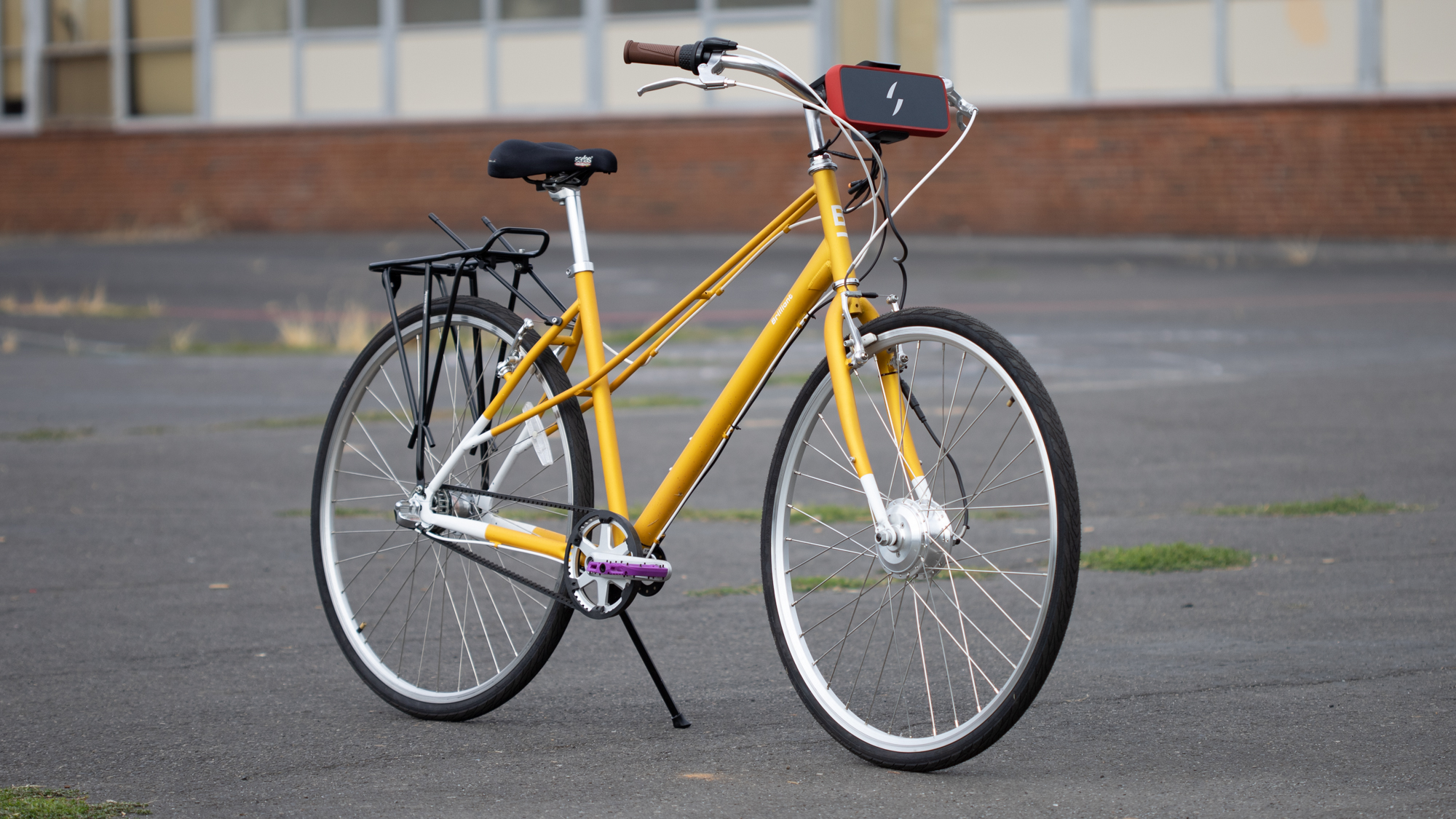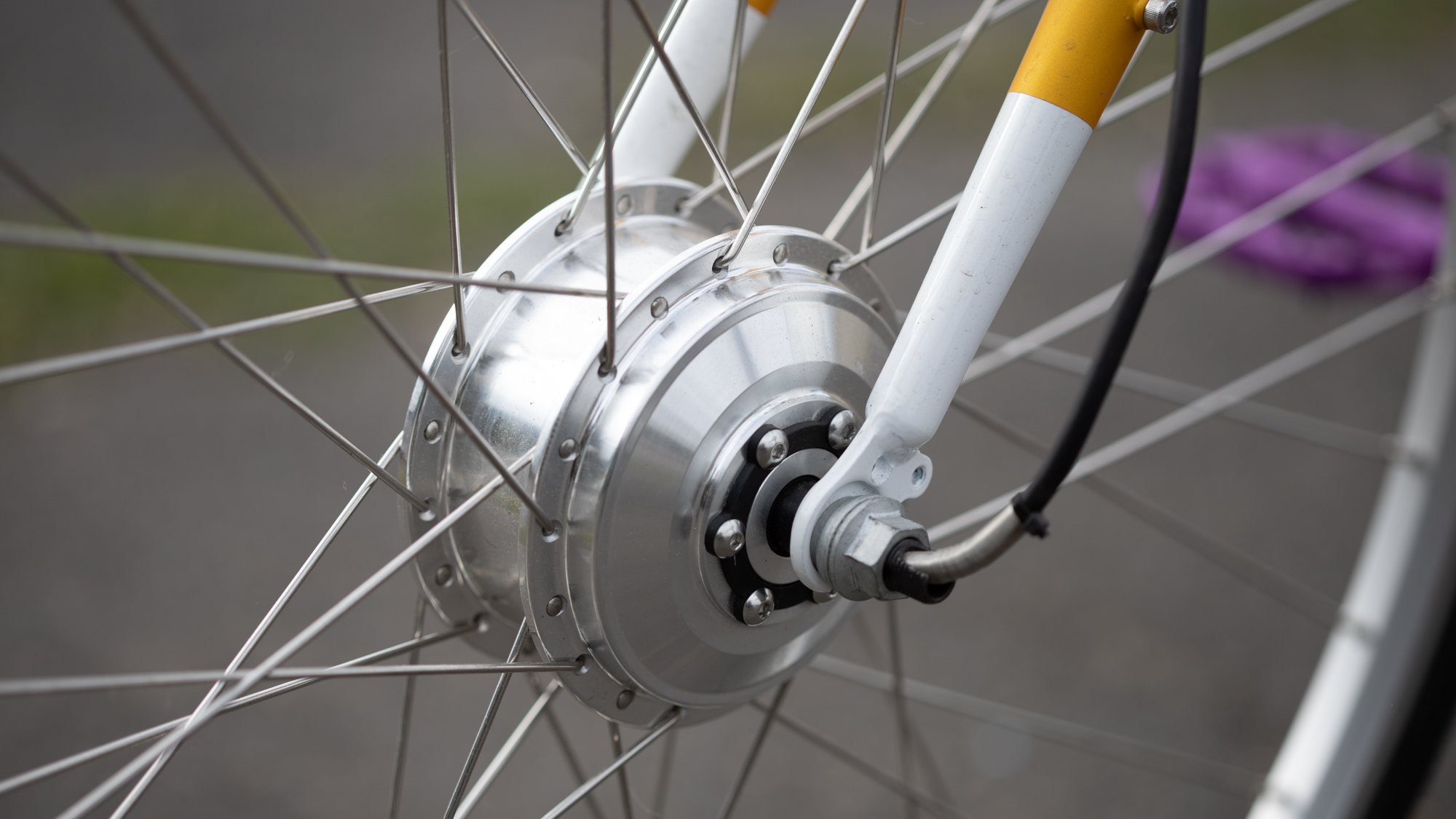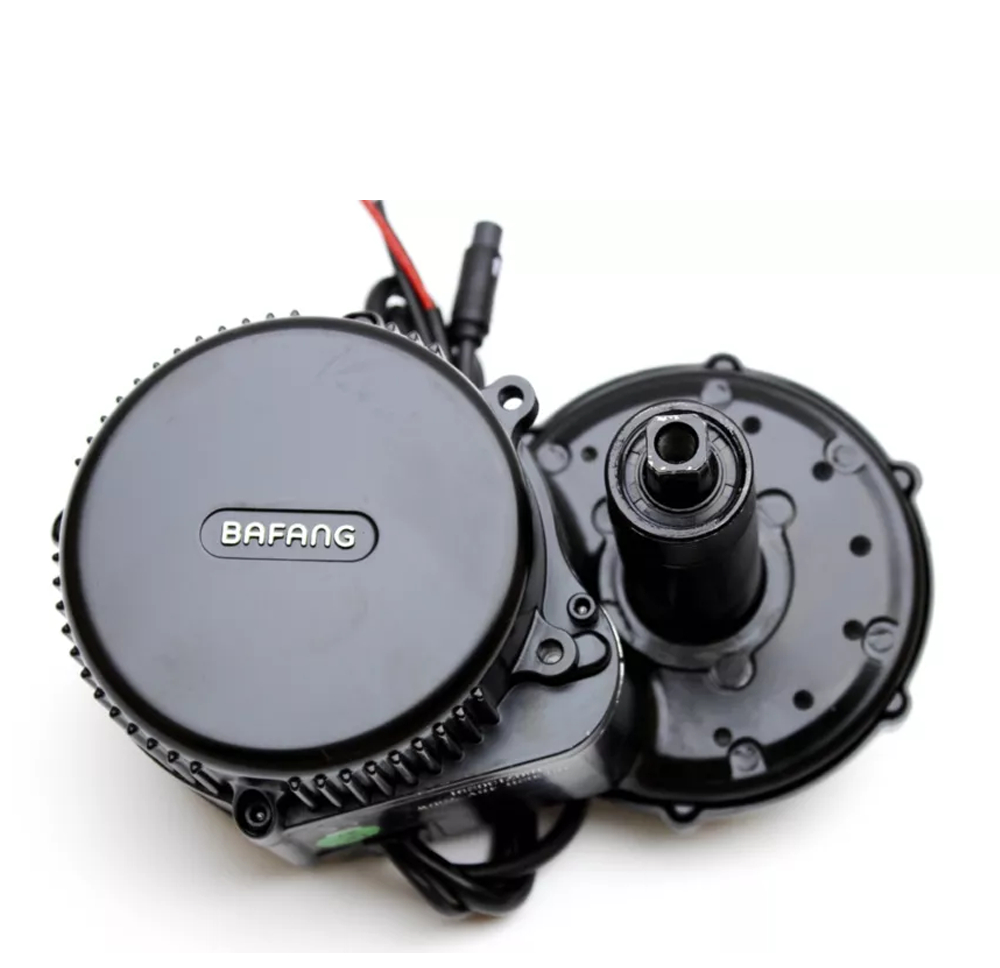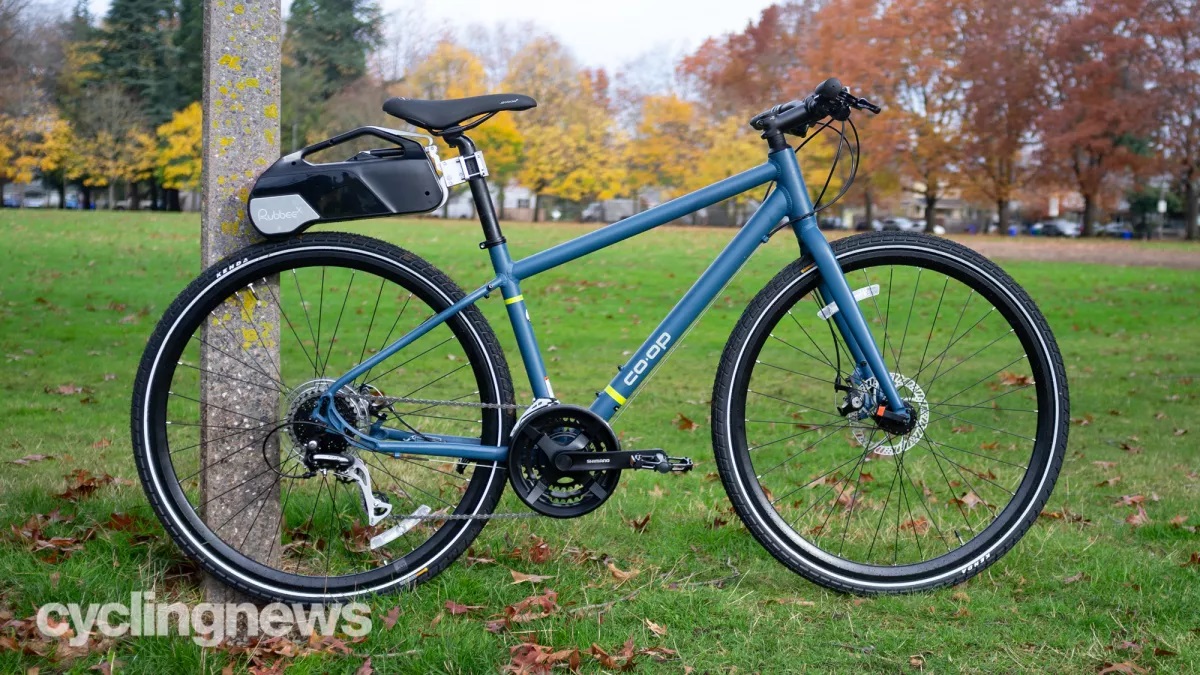
Electric bike conversion kits provide a potentially less expensive route into electric bike use than buying one of the best budget electric bikes. If you’re thinking of going down this route, there are a wide range of kits available via Amazon, other retailers or direct from the manufacturer. They all fall into one of a few types though and we’ll explain these and go through the pros and cons of each here.
If you have a bike that you could convert to electric assistance, buying a kit may seem like the obvious way to go. It’s worth considering if this really is the most cost-effective option before buying a kit though; read our post on the pros and cons of electric bikes vs electric bike conversion kits to help you decide.
Front hub

Pros: Reasonably easy to install
Cons: Need to replace a wheel, which can affect steering and handling
Front hub kits usually include the motor pre-installed in a front wheel, which you use to replace your existing wheel. Clearly, this needs to fit diameter-wise as well as width-wise in your fork legs and also use the same type of braking standard (disc or rim) and axle standard as your existing wheel.
We’ve reviewed a couple of designs, including the Cytronex, Bafang and Swytch kits.
Having replaced your wheel, it’s then a case of wiring up the battery and control electronics. This usually makes for relatively simple installation, although if the battery sits on your frame rather than your steerer, the wires to the motor will need to be routed around the bike’s headset and down a fork leg, which can be awkward with the heavy-duty cables required.
Among the disadvantages of front hub motors is that they can alter the weighting of your steering and so affect your bike’s handling. Often the battery sits on the front of the bike as well, which can further exacerbate handling issues.
Your front wheel is relatively less weighted than your rear, so adding power to it from the motor can also induce slip if the road is wet.
Bottom bracket

Pros: Weight is low down and central so less effect on handling
Cons: More complex to install, may not work with all bottom brackets, added torque may increase drivetrain wear
A bottom bracket mounted, or mid-drive, motor powers the bike through its chainset, chain and back wheel. It’s a position that puts the motor low down and central on the bike, so it should avoid handling problems. The extra power and torque through the drivetrain can increase the rate of wear, so you may find that a chain and components not designed for this wear more quickly.
Installing the motor can be more tricky than in other locations, as the motor has to work with the bike’s existing bottom bracket shell and this is an area of the bike that’s notoriously prone to different standards in width and diameter, so make sure that the kit you’re interested in will work with your bike.
Having said that, many lower-spec bikes use a standard BSA threaded bottom bracket shell. A BSA bottom bracket diameter is the same between road and mountain bikes, but the shell width is different, so make sure you get a kit that’s compatible with your bike.
Rear hub

Pros: Quite quick to fit
Cons: Need to replace rear wheel
Rather like a front hub motor, most rear hub conversion kits include a replacement wheel with the motor pre-installed. You swap out your old wheel, so the same considerations of wheel diameter, rim and hub width and brake and axle type apply as with a front hub motor.
You then just need to install the battery and any other monitoring and control hardware, so it’s a relatively quick and easy process. The cable from the battery and any control electronics need to be routed around the frame so that they’re not in the way while you pedal, which may not be straightforward.
Because the rear wheel carries more weight than the front, slippage is less of an issue. There’s often a brace that attaches to the bike’s chainstay, which can put extra strain on it in a direction that it’s not designed for.
Hub-mounted motors can often add a decent amount of weight and the torque generated can often cause problems like spoke breakages on lower-quality wheels, try to buy the best you can or get it checked by a bike shop for long-term durability.
Rear tyre

Pros: Quick to fit
Cons: Tyre noise, wear on the tyre, can slip in the wet
The final option for an electric bike conversion is a motor that drives your bike via its rear tyre. The Rubbee X is a motor that we’ve tested. It has an integrated battery and just sits bolted to your seatpost and rests on your tyre. There’s even an integrated carrying handle. We’ve seen other similar systems appear on Indiegogo and other crowdfunding pages.
The typical design makes it very easy to install on pretty much any bike, as it’s self-contained, although you do need an adequate length of exposed seat post above your rear wheel for it to fit.
The disadvantages are that, since the system relies on friction to drive the rear wheel, it can wear your tyre quite rapidly and it may slip in the wet. The integrated battery and motor make the unit quite heavy to carry around as well and range may be limited. We found the Rubbee X to be noisy too.
Other things to look out for

In the UK, EU and Australia, an e-bike conversion kit needs to be limited to 250 watts output to be legal to ride on the road. It also needs to be speed limited to 25kph/15.5mph and not operate unless you’re pedalling (although Australia also allows throttle-operated systems).
The US is more relaxed and, in many states, your e-bike conversion kit can output more power than this, be throttle operated and be speed limited to 28mph, although legislation is complex and differs from state to state.
Take a look at our pieces on e-bike classes and how fast is an electric bike for more detail but make sure that you can legally operate your intended kit where you intend to use it. We have a lot more advice on e-bike conversion kits, including the insurance considerations and have reviewed a number of different systems.
One more thing: not all e-bike conversion kits are sold with a battery. Obviously, you’ll need one and may have to buy it separately so be sure to check this first.







